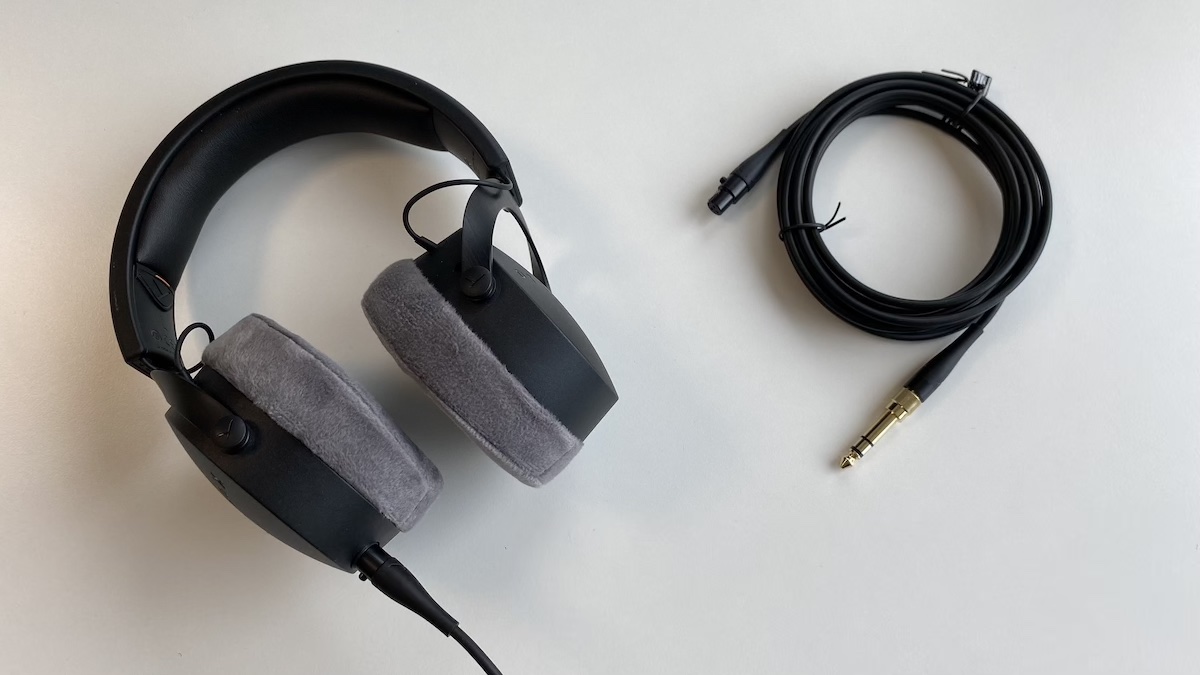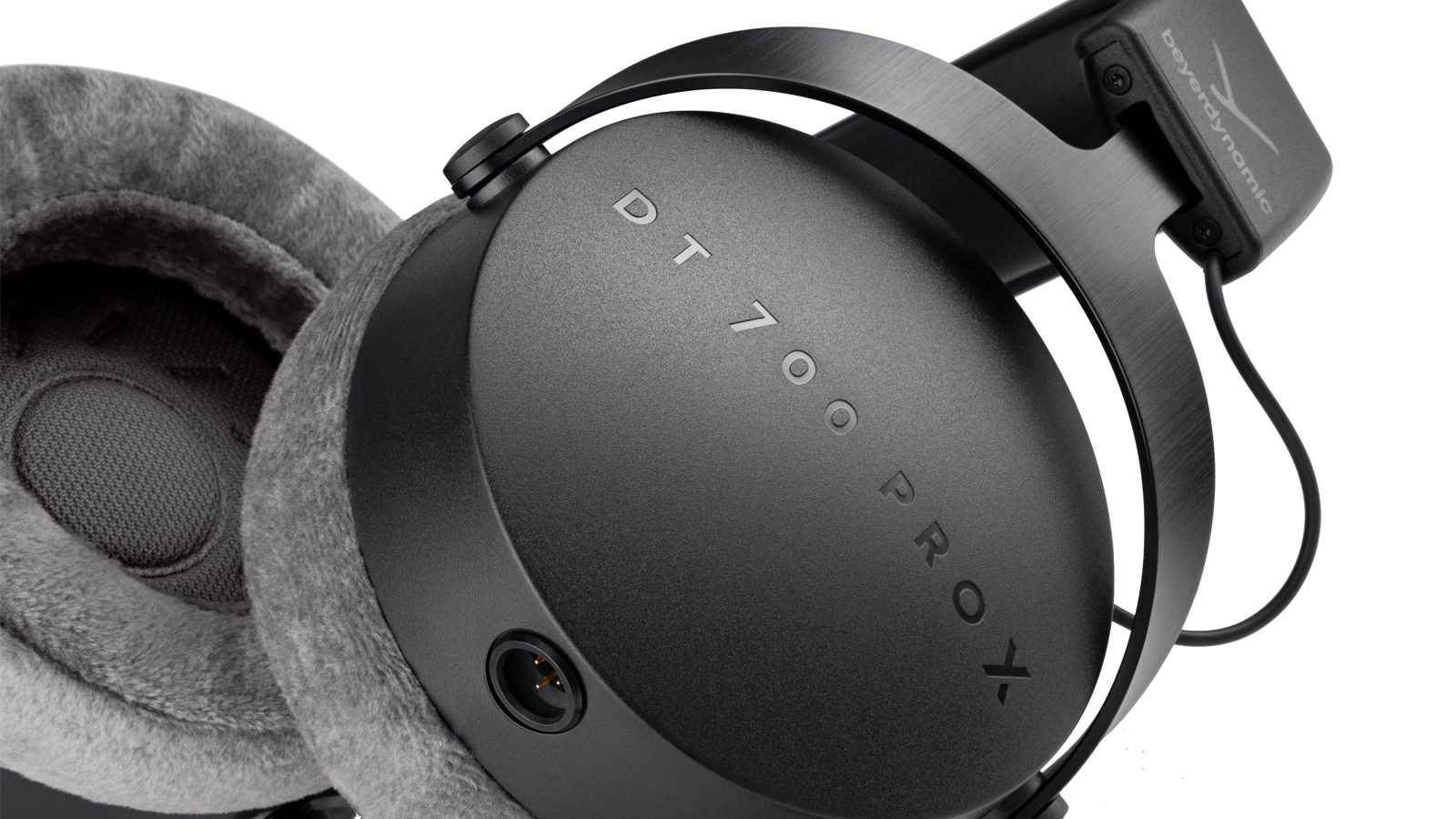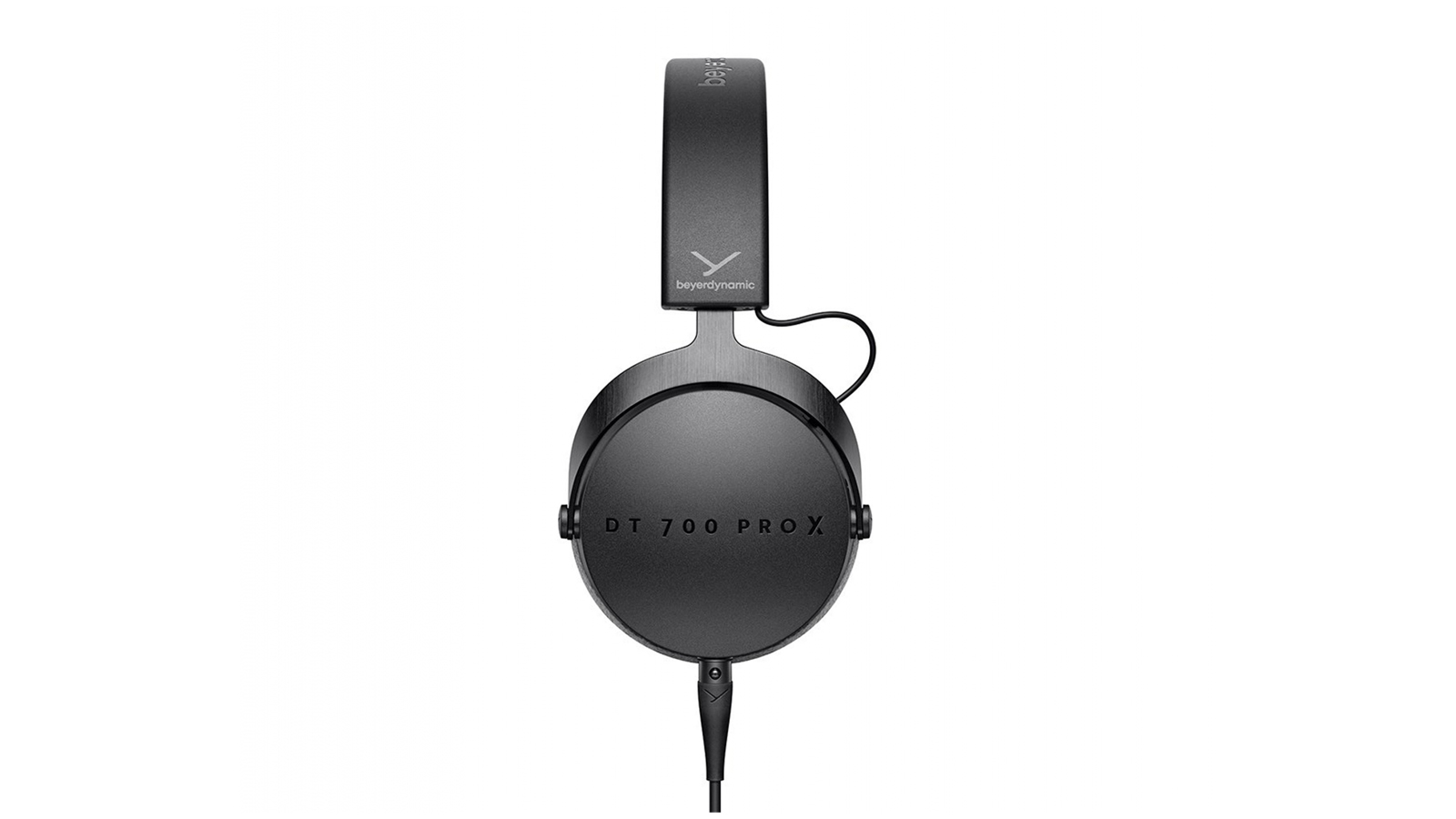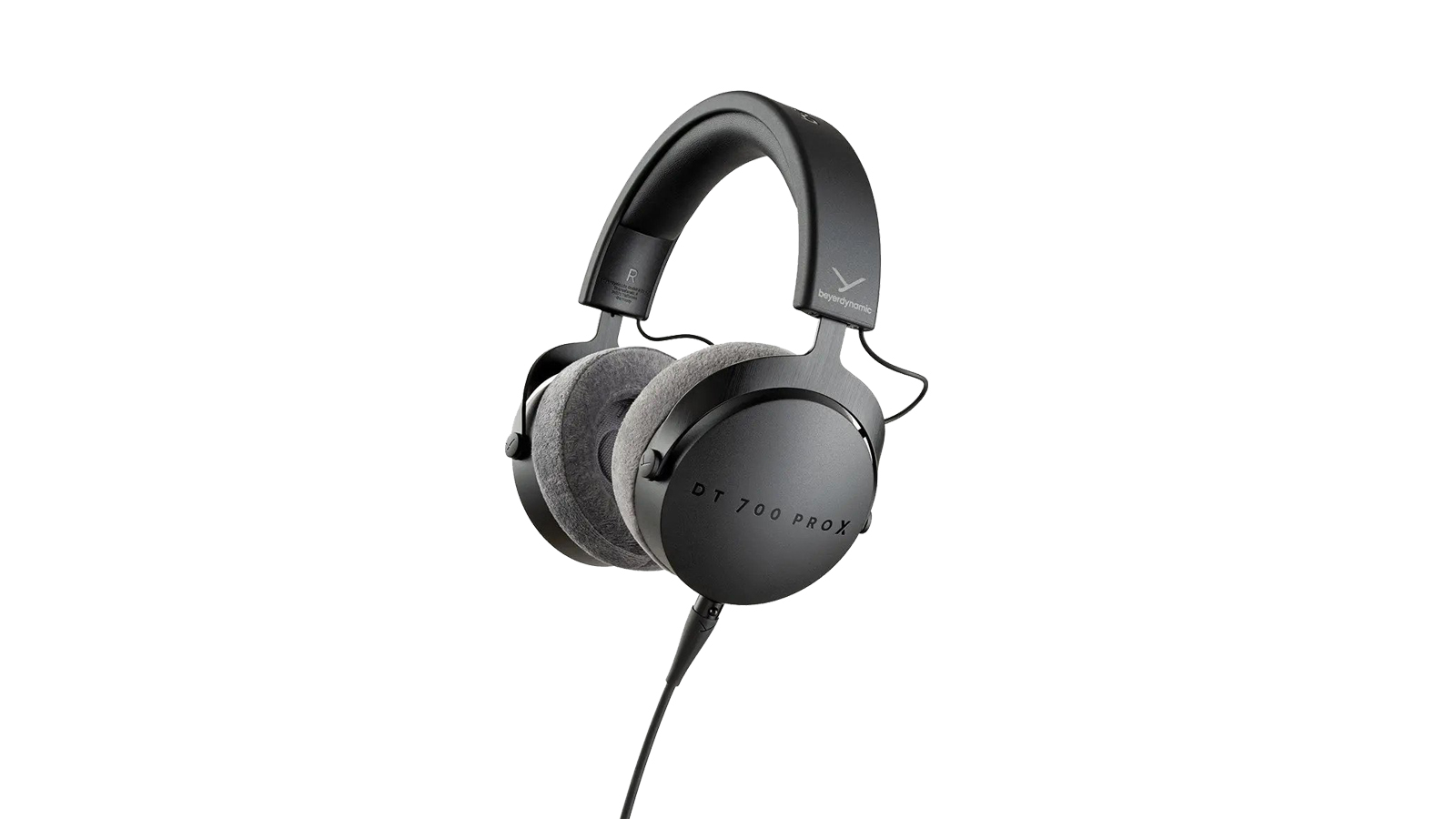MusicRadar Verdict
If you already have a pair of DT 770 PROs and love them, there probably isn’t any great need to upgrade to these, unless you’re looking for something you don’t need to drive as hard. However, if you’re in the market for a new pair of reliable studio cans that you’ll reach for time and again to expose the fine details in your productions when tracking and referencing, while simultaneously revealing hitherto undiscovered delights within existing material, the Beyerdynamic DT 700 PRO X should be up there at the top of your list.
Pros
- +
Great build quality
- +
Sleek, modular design
- +
Neutral yet powerful sound
- +
Extremely comfortable
Cons
- -
Quite bulky
- -
Not very portable
MusicRadar's got your back
Beyerdynamic DT 700 PRO X review: What is it?
Beyerdynamic are deservedly a household (studiohold?) name in the professional studio headphone business, their ubiquitous DT 100 model famously featuring in hundreds of studio performance videos since the mid-1980’s. More recently, the DT 770 PRO has built a solid reputation as an affordable, high-performance closed-back studio reference monitor headphone. Now though, we have the new DT 700 PRO X, an entirely new model released late in 2021 that features new driver technology, a more modern design, a detachable cable system and improved padding.
The eagle-eyed amongst you will have spotted the difference in model numbers between the existing DT 770 PRO and the new DT 700 PRO X. What’s with the different numbers I hear you ask? Well, Beyer’s new PRO X range of headphones, which includes both the closed-back DT 700 PRO X and the open-back DT 900 PRO X, are not replacements for the PRO series, but are instead new models in their own right. Both ranges are set to continue to exist side-by-side, with the 700 PRO X marketed as a more upmarket, technically advanced headphone intended for use as a professional-level recording and studio monitoring solution.
In the box, you get a drawstring bag containing two detachable cables - of 1.8 and 3m lengths - which connect to the underside of the left earpiece via a proprietary three-pin miniature XLR-style connector. At the other end, each cable terminates in a 6.3mm stereo jack plug which unscrews to reveal a standard 3.5mm stereo mini jack.
Beyerdynamic DT 700 PRO X review: Performance & verdict




The overall design of the PRO X has been updated to a sleeker, more modern look than the older PRO range, yet the first thing that strikes you about these cans upon unboxing is the enormous grey velour padded ear cups. These feel luxuriously decadent when you first put them on, swallowing your outer ears voraciously and surrounding them with a thick, soft tightly-sealed layer of padding that’s pretty effective at shutting out external noise. Beyer refers to this as passive isolation, meaning that there’s no active noise-cancellation technology involved - any blocking out of ambient noise is purely down to the acoustic properties of the padding and the closed back earcups themselves. We tried them in a crowded coffee shop and were able to blank out most of the background clinking and chatter to enjoy a comfortable listening experience as we rattled through our test playlist.
Clamp strength is such that there’s hardly any difference in the bass response when you push inwards on the ear cups, yet they’re comfortable enough to wear for extended periods, the generous padding working well to prevent discomfort while maintaining optimum low-end performance. Not only does it make you feel like a teddy bear is cuddling your ears, but the padding also helps prevent sound leakage onto your mics when recording, making these a great bet for monitoring whilst tracking in the studio. It does take a hit in the portability stakes since the ear cups don’t swivel or fold flat, so their inherent chunkiness makes these not the greatest bet for slinging into a laptop bag and taking on your travels.
Feel the quality
The 700 PRO X’s build quality is impressively robust, with all materials appearing to be high quality and the construction solid. These cans feel reassuringly expensive with the generous padding and the glossy black Beyerdynamic logo emblazoned across the top surface of the headband. Left/right labelling is subtle rather than prominent, embossed on the inner surface of the headband just above each ear cup, with a tiny red highlight on the left side. It doesn’t take long however to suss that the cable plugs into the left ear, and that if you can read the branding on the top you’ve got them the right way round.
Replaceable components are always a big tick in the box for studio cans, and one of the long-term standout features of Beyerdynamic’s headphone design philosophy is modularity. Unsurprisingly then, these cans are no exception - the cables are easily swappable, and the ear pads and headband pads can all be replaced, assuring a confidence-inspiring promise of longevity.
Want all the hottest music and gear news, reviews, deals, features and more, direct to your inbox? Sign up here.
Whilst the DT 770 PRO continues to be available in three different impedances to suit various applications, the 700 PRO X’s impedance rating is fixed at a broadly versatile 48Ω, meaning that it performs equally well plugged into a mobile device, laptop or audio interface and doesn’t need an amp to perform at its best, unlike some of the higher impedance non-X models in the range. We tried both the 80Ω version of the DT 770 PRO and the DT 700 PRO X plugged into a laptop headphone output set at identical output volume levels, and the PRO X sounded much louder and punchier than the older model.

Stellar performance
The key to the 700 PRO X sound, and its unique selling point, are the STELLAR.45 transducers with their newly developed, three-layer speaker diaphragm featuring an integrated damping layer that, according to Beyer, has created a highly efficient driver system that performs superbly on all playback devices. The fast response of the new transducer and the lightweight coil produce a detailed transient response and a reliable sound that’s distortion-free even at high sound pressure levels, it says here.

On testing, we found that the 700 PRO X measured up to these claims pretty well, delivering an excellent, balanced response across the range, with little or no sub-harmonic distortion, a solid, yet not over-pronounced low-end and great top-end detail. True to its studio monitor designation, its relatively neutral frequency response is not a flattering profile, but is instead more hard, vibrant and powerful rather than overly warm-sounding. The increased loudness over the 770 PRO due to the lower impedance is immediately apparent, and those new drivers do a great job of compensating for any loss of separation or stereo imaging.
We did detect a little boxiness in the upper mids initially, with a slight sibilance boost on some vocal recordings, but this seemed to subside as tests went on. The soundstage was also appreciably wider than a lot of closed-back cans, with panned instruments within mixes we knew well appearing exactly where they were supposed to be within the stereo image.
Beyerdynamic DT 700 PRO X review: Hands on demos
The HEADPHONE Show
Sean Divine
Wheezy Tech
Beyerdynamic DT 700 PRO X review: Specification
- Frequency Response: 5Hz - 40kHz
- Impedance: 48Ω
- Weight: 350g
- Contact: Beyerdynamic
Dave has been making music with computers since 1988 and his engineering, programming and keyboard-playing has featured on recordings by artists including George Michael, Kylie and Gary Barlow. A music technology writer since 2007, he’s Computer Music’s long-serving songwriting and music theory columnist, iCreate magazine’s resident Logic Pro expert and a regular contributor to MusicRadar and Attack Magazine. He also lectures on synthesis at Leeds Conservatoire of Music and is the author of Avid Pro Tools Basics.

